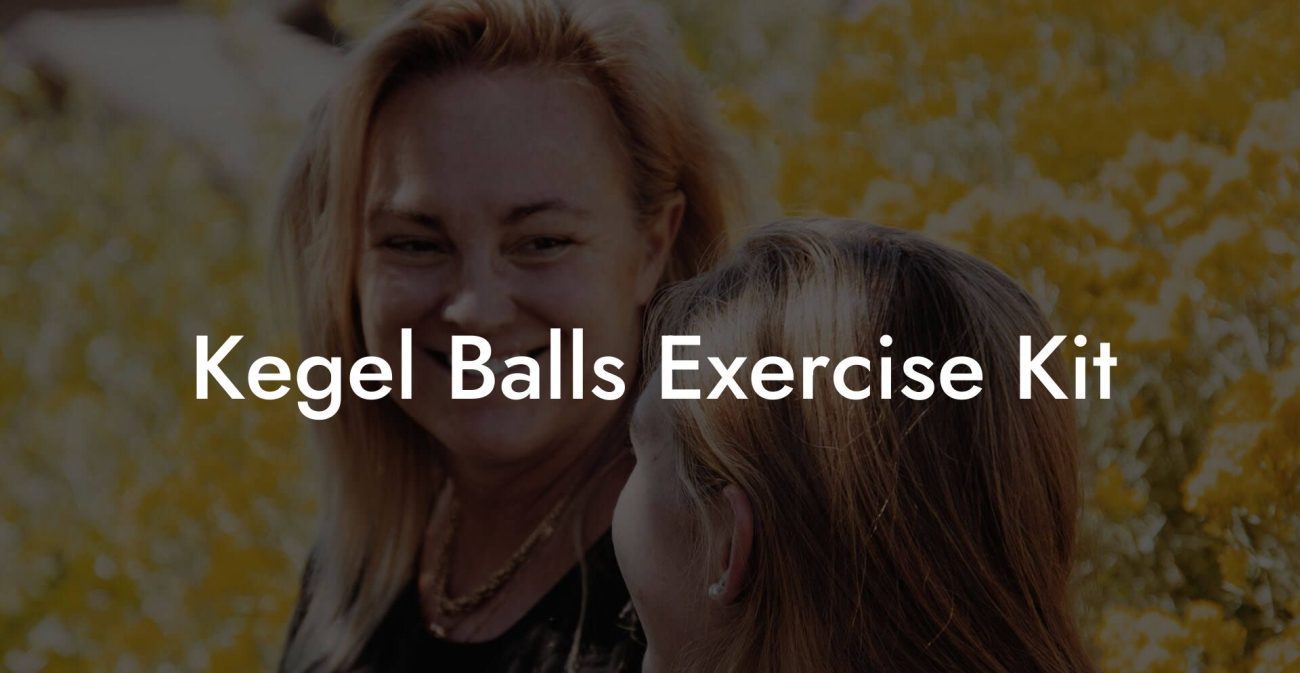Are you suffering from stress incontinence and looking for an effective solution? Don’t worry! You're not alone in your search for answers. kegel exercises are a proven way to help address this issue, and we'll guide you through everything you need to know to get started with them.
Kegel Exercises For Stress Incontinence Table of Contents
Why are kegel exercises Important for Stress Incontinence?
How to Perform kegel exercises
Transform Your Pelvic Floor in Just 4 Weeks: The Pelvic Floor Bible
Transform Your Pelvic Floor in Just 4 Weeks: The Pelvic Floor Bible
What is Stress Incontinence?
Stress incontinence is a common condition that occurs when sudden pressure on the bladder, such as laughing, coughing, sneezing, or exercising, causes involuntary leakage of urine. This leakage happens because the pelvic floor muscles that support the bladder and urethra are weakened, making it challenging to control urine flow.
Why are kegel exercises Important for Stress Incontinence?
kegel exercises, named after the gynecologist Dr. Arnold Kegel, involve contracting and relaxing the pelvic floor muscles, which are responsible for supporting your bladder, uterus, and rectum. By strengthening these muscles, kegel exercises can help improve bladder control and reduce the severity and frequency of stress incontinence episodes.
Benefits of kegel exercises
- Improved bladder control
- Reduced urinary leakage
- Increased confidence in public situations
- Enhanced sexual function
- Supports overall pelvic floor health
How to Perform kegel exercises
Before starting with kegel exercises, it is essential to identify the correct muscles used during the exercise. The easiest way to find your pelvic floor muscles is by stopping your urine flow midstream - this is the action you will be performing during kegel exercises. Remember, do not practice Kegels while urinating, as it can lead to incomplete bladder emptying or urinary tract infections.
Step-by-Step Guide to kegel exercises
- Find a comfortable position, such as sitting or lying down.
- Tighten (contract) your pelvic floor muscles - the same muscles you use to stop urinating midstream. Ensure you're not using your abdominal, buttock, or thigh muscles.
- Hold the contraction for 3 to 5 seconds, then release for the same amount of time.
- Repeat this process 10 to 15 times per session. Aim for at least three sessions per day.
- Gradually increase the duration of contractions and relaxations as you build strength, but always maintain an equal time for both.
Remember, consistency is the key to success with kegel exercises. It can take several weeks or months of regular practice before seeing significant improvement in your symptoms. Be patient, and don't get discouraged if you don't see immediate results.
Common Mistakes to Avoid
While performing kegel exercises, make sure to avoid these common mistakes:
- Using the wrong muscles and neglecting the pelvic floor muscles
- Not following a consistent exercise routine
- Holding your breath during the exercises
- Overdoing it and causing muscle fatigue
kegel exercises For Stress Incontinence Example:
Jane, a 40-year-old woman, is dealing with stress incontinence and is struggling with urinary leakage whenever she sneezes or exercises. After consulting her doctor, she starts a Kegel exercise routine.
For the first two weeks, Jane practices kegel exercises while sitting and focuses on contracting and relaxing her pelvic floor muscles for 3 seconds each. She makes sure not to use other muscles like her abdomen or thighs while doing the exercises.
After a month, Jane increases the contraction and relaxation duration to 5 seconds and practices kegel exercises while standing and lying down. Consistently sticking to her routine, Jane notices significant improvement in her bladder control and is confident in participating in her daily activities without worrying about urinary leakage.
In conclusion, kegel exercises can be a game-changer for those dealing with stress incontinence. By empowering yourself with knowledge and dedicating yourself to a regular exercise routine, you can significantly improve your quality of life.
If you found this article helpful, please share it with others who may be experiencing similar pelvic floor challenges. Explore our other guides on pelvic floor therapy to gain more insights into maintaining and improving your pelvic floor health. Together, we can conquer stress incontinence and regain control of our bodies!













